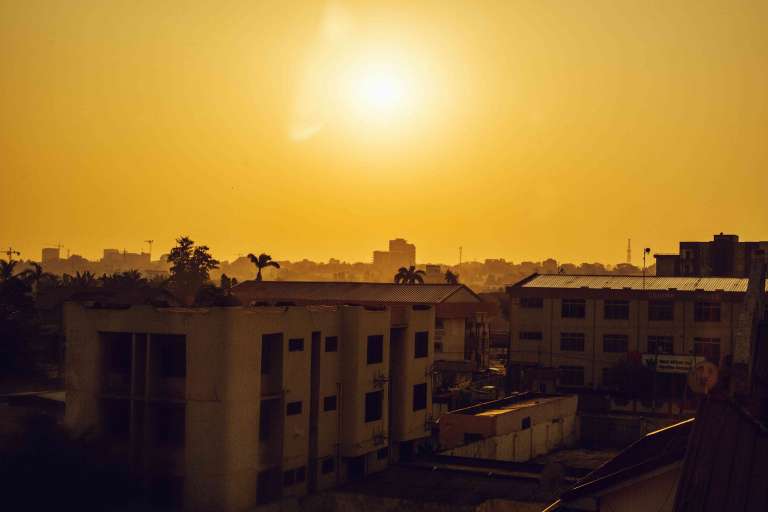A complimentary card might be one of those things that escapes your memory when you’re running a business. But it can be a very invaluable asset, especially when it comes to expressing gratitude and cementing relationships with customers and clients. But it is not enough for the card to be aesthetically pleasing or beautiful. For your gesture to truly make an impact, it is also important that your complimentary card reflects your brand in both sophistication and ethos. Thus, thoughtful and well-crafted design is key.
This article delves into the intricacies of creating the perfect complimentary card. One that not only elicit a positive response on the basis of its design, but can also serve as testament to your brand’s story, commitment to excellence, and vision. The article will explore steps from choosing the right format and selecting appropriate imagery, to establishing the right balance between the complexity of the text and the use of visuals! The end purpose is to help you answer the question: How do I design a complimentary card that leaves a lasting impression?
What are Complimentary Cards?
Simply put, complimentary cards are as the name suggests: simple cards used to express gratitude, appreciation, or display benevolence. Printed on high-quality paper, they usually include a short and thoughtful message, along with the sender’s signature and perhaps a logo. They are very versatile tools: case in point, they prove useful when a brand wants to thank a customer for their business, build a relationship with new clients, or even create stronger relationships with their employees.
What are Business Cards?
A common mistake is to confuse business cards and complimentary cards. A business card is one that contains all relevant information about your company, or a person at that company, for the purposes of being a marketing tool to promote products, services, and ideas. In a way, they are a miniature representation of your professional identity and a very good way to make a first impression at a business meeting or an event with potential clients.
A business card typically includes the person’s name, titles, company name, phone number, email address, and even personal or company website. In fact, business cards can also take it a step further, including a brief summary of the person’s qualifications, skills, or experience.
Difference Between Business Card and Complimentary Card
Now that we’ve delved into the meaning of both business and complimentary cards, it is also important to consider the ways in which they differ. Beyond the name, the main difference between both is in their purpose. Complimentary cards are used as a method of building camaraderie through the expression of thanks, while business cards are primarily marketing tools.
Another difference is the information included on the card. Complimentary cards usually have a simple message, while business cards contain detailed information about the person or company, such as contact information and professional credentials.
The way both cards are designed is also very distinct: complimentary cards, due to their nature, tend to be more decorative with higher quality print, while business cards are supposed to be succinct and so functionality and legibility are key.
Ultimately, both cards serve very different purposes and so it is expressed in how they look.
Advantages of Business Cards
Business cards have their own unique benefits to their use. Some of them are:
- Excellent tools for a good first impression: If you’re at an event or meeting a new client, a well-designed business card is a starling tool that can help you make a positive first impression with a well-lasting impact on the client or business client. Everyone remembers the first impression and a business card is a good tool in improving the efficacy of that interaction.
- Good for Networking Opportunities: Exchanging business cards can be one of the best ways to connect with potential clients and future business partners, expand your network, and even increase opportunities in finding new business opportunities.
- An Excellent Way to Promote Your Business: Business cards are also extremely convenient as a marketing method. It is an extremely convenient way to promote your brand and highlight professional credentials and experience.
Advantages of Complimentary Cards
Complimentary cards also have their own distinct advantages that are uniquely separate to the advantages of business cards. These are:
- A Good Way to Express Gratitude: When you send a complimentary card, it helps show how appreciative you are of your customers, employees, or partners. It helps communicate your gratitude in a sincere and professional manner, which can be useful in strengthening relationships and helping build loyalty.
- Increasing Customer Satisfaction: Little can be as satisfying for a customer as receiving a dedicated thank you from a business they recently used. It makes them feel valued and can increase their satisfaction. This can lead to repeat business and positive reviews in the future.
- Helps Establish Brand Recognition: A good idea would be to include your company logo or maybe a personal design on your complimentary card. It would really help improve brand recognition and even increase visibility.
The Details: The Step-by-Step Guide to Designing a Complimentary Card
Step 1: What is Your Purpose?
Right before you get ahead to designing your complimentary card, it is first important to understand why you’re working on said card in the first place. Think about your purpose: do you want to show appreciation for a customer’s loyalty? Or is it to just celebrate a special occasion like a company anniversary? Deciding on the purpose of the card is crucial in determining the tone, style, and execution of the card you have in mind!
Step 2: Choose Your Format
Formatting is a difficult thing to decide on, especially as there are various formats existing today to choose from when designing a complimentary card. From folded cards, flat cards, postcards, there are a lot of options out there. So first of all, in selecting, consider factors like the amount of content you want to include, the level of formality required, and your available budget. When you align on all these details, you can then figure out the format that works for your needs.
Step 3: Select Your Colors and Images
Colors and images are crucial in setting tone and style. These are especially important when you’re trying to align your card with your brand. As a result it is important to choose colors that complement your brand and reflect the exact purpose of your card. When choosing images, consider using a custom design or illustration or a relevant photo choice. Avoid stock photos especially.
Step 4: Add Your Text
Now that you have chosen your format, colors, and images, the next step is to pick your text. First of all, focus on picking a font that is easy to read and very reflective of your brand. Think about the style of the text and how that speaks to your brand identity. Then next is the message: when writing it, aim to be sincere and personal, while including relevant details such as dates and locations.
Step 5: Review and Revise
Before you go ahead to send the card to the printer, make sure you review and revise the design and text. Ensure you spell check your message, you use high-quality images, and that your card is actually truly indicative of the tone and style you intended.
Step 6: Print and Distribute
Once all the above steps have been completed, it is now time to send your card to be printed. Ensure you go for a quality printing method that both aligns with your budget and the timeline for delivery. Printers often provide proof copies before doing a mass run, so it is important to get a proof copy that you can review and provide feedback on, before continuing a mass run. Also ensure to choose a printing method that best fits your budget and timeline. And then once your cards arrive, you can then distribute them to your customers and clients, either by person or through mail.
Some Frequently Asked Questions about Complimentary Cards
What Should I Include in My Complimentary Card Message?
Aim for personal and sincere messages that still reflect the purpose of the card. Ensure that you still include relevant details like dates and locations. And most of all, ensure to fully express a real sense of gratitude to whomever it might be.
What Size Should My Complimentary Card Be?
The size of the card is highly dependent on the format you choose. But the most standard cards are 3.5” x 5” or 4” x 6”.
What’s the Best Printing Method for My Complimentary Card?
Choices for printing methods depend on budget and the timeline you’re working with. Generally options include digital printing, letterpress printing, and foil printing. Choose whichever you need depending on your own needs.
Final Thoughts
Complimentary cards are an excellent way to show a great sense of appreciation to your customers and clients. The sense of connection and appreciation they evoke go a long way to creating a lasting impression that can go beyond repeat purchases and actually create real connections between people and your brand. By following the steps outlined above, you can create a professional and eye-catching card that not only reflects your brand and conveys your message in a meaningful way, but also exhibits your brand as one in touch with everyone within their ecosystem. So whether you’re celebrating a special occasion or simply showing your gratitude, a complimentary card is perhaps one of the most thoughtful ways to connect.






How to Design a Complimentary Card: A Step-by-Step Guide